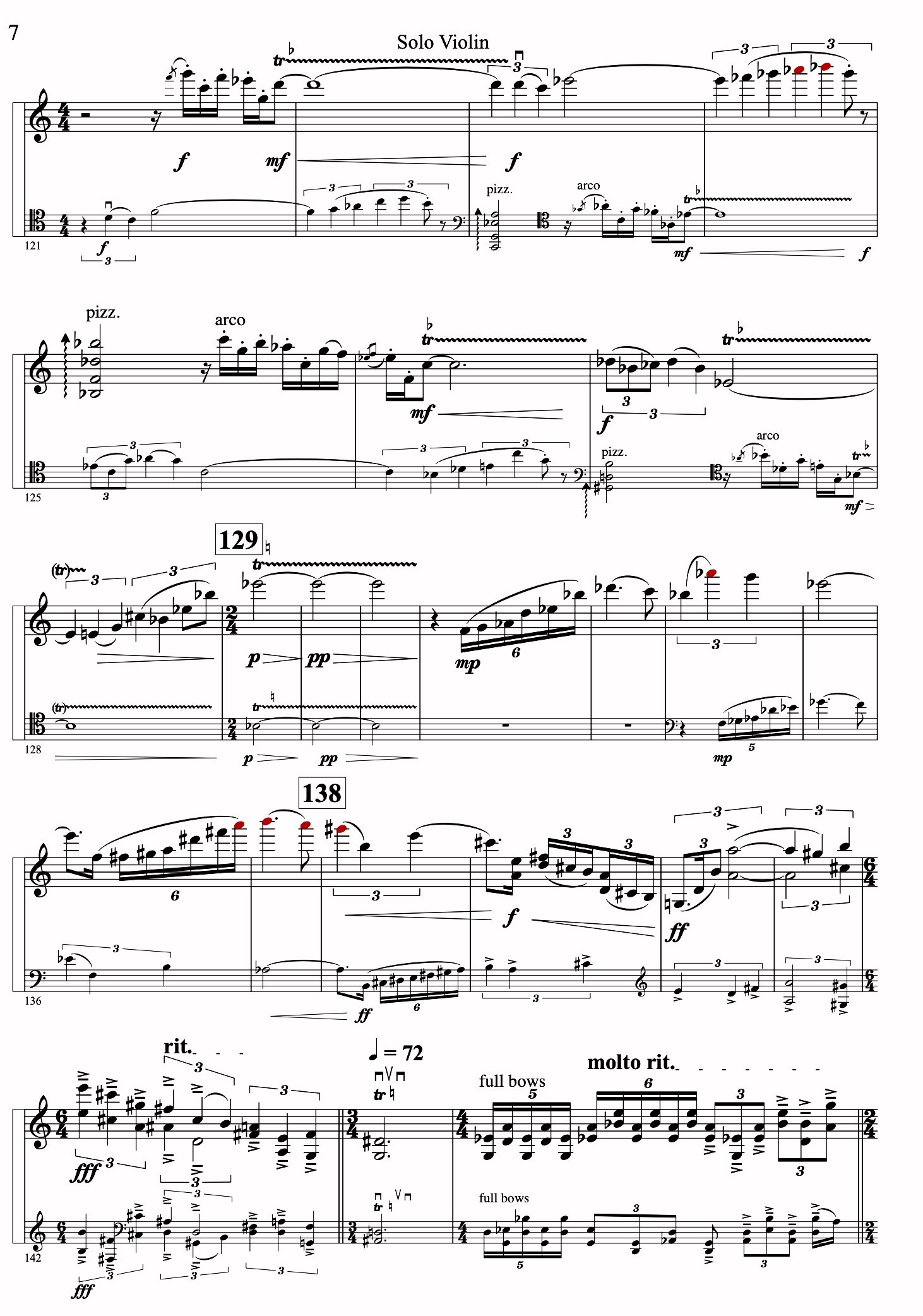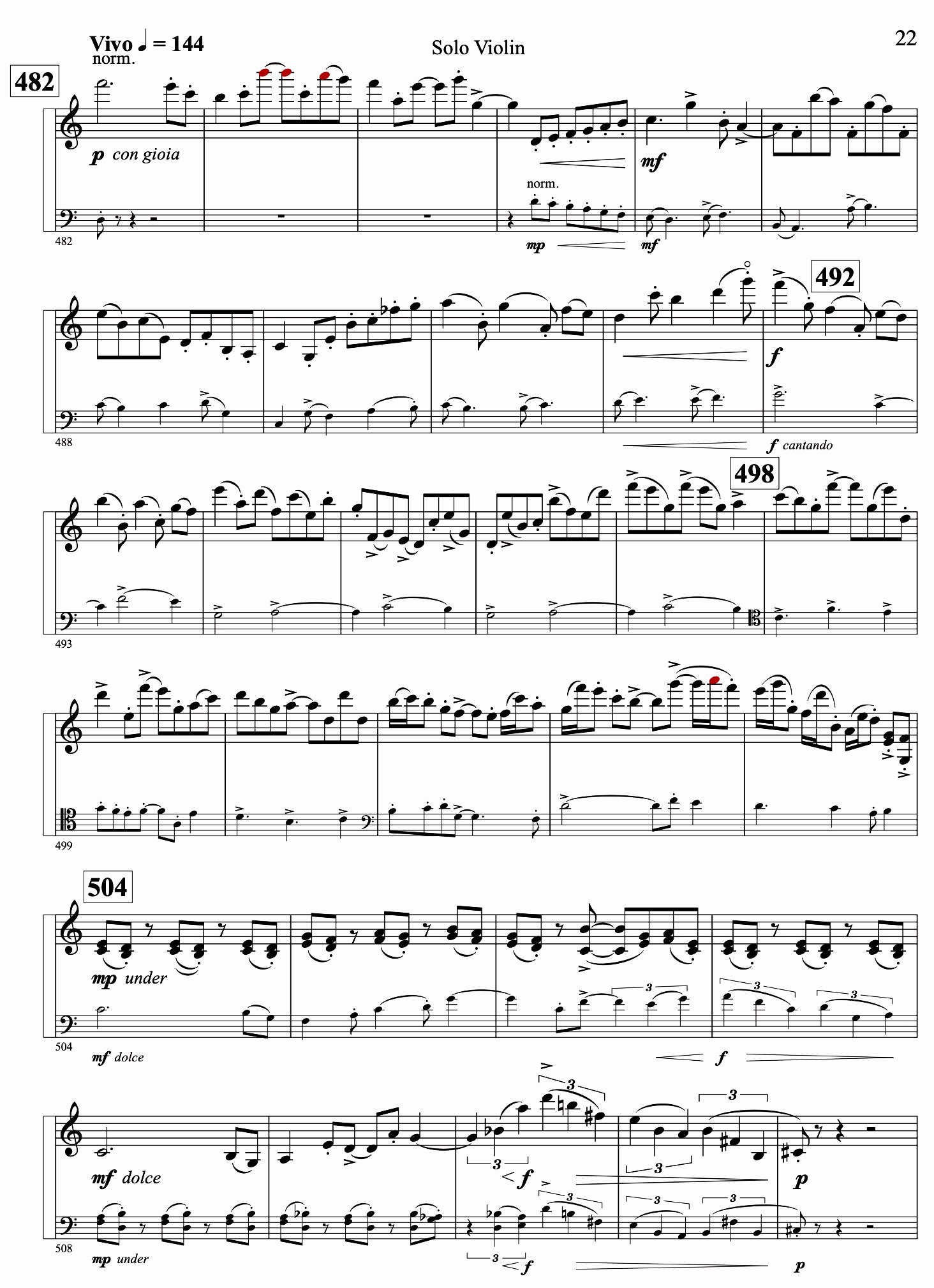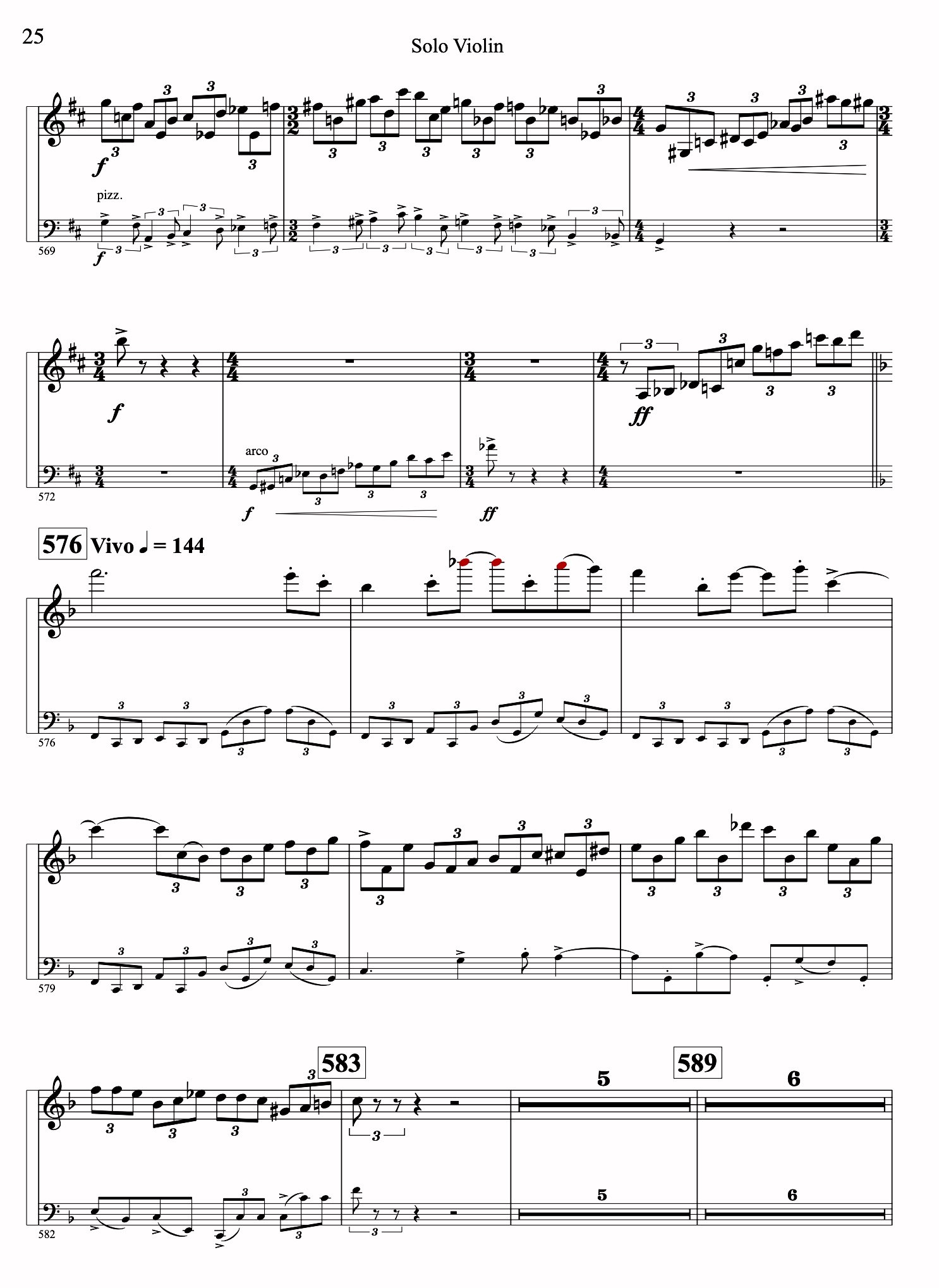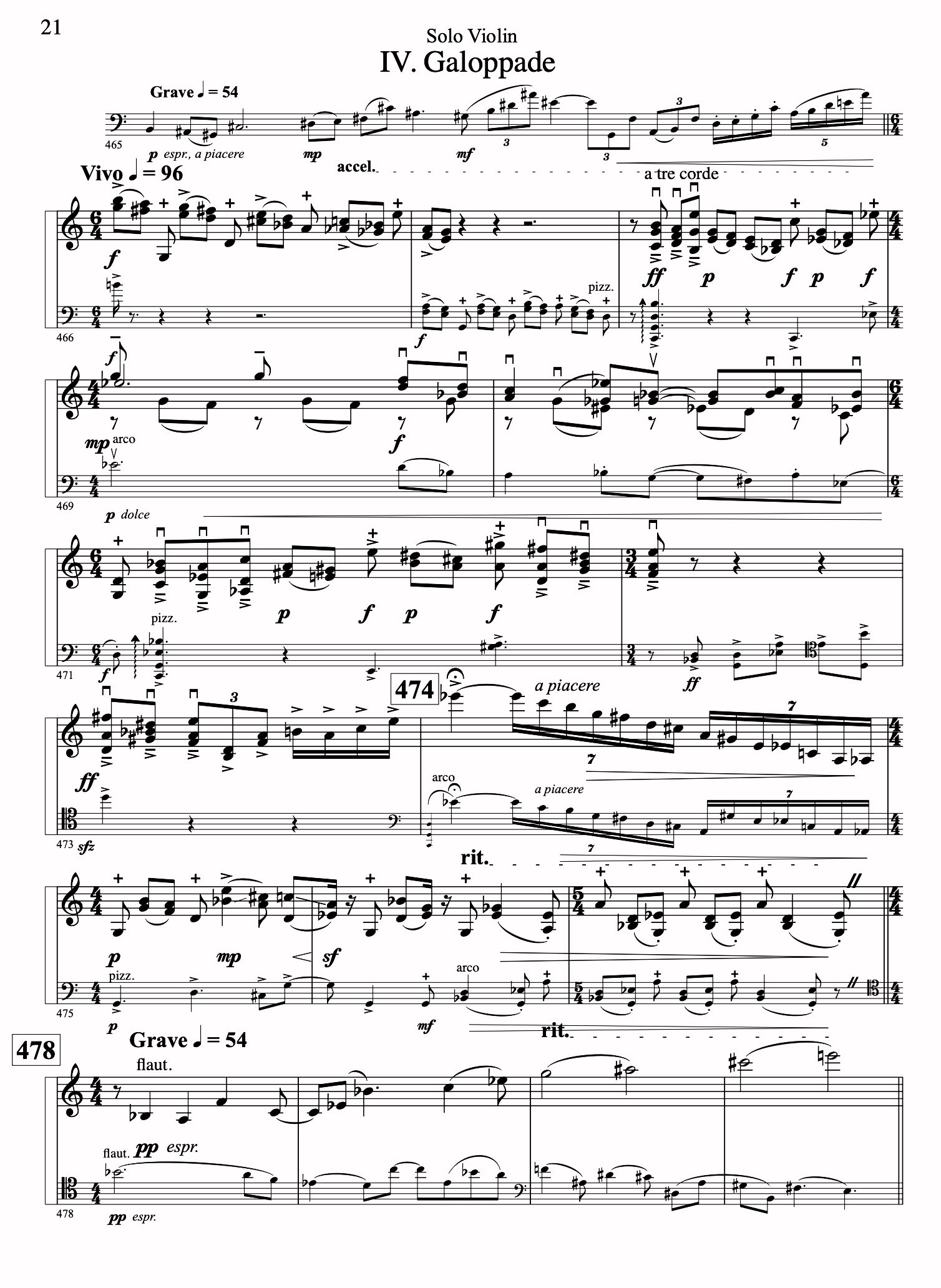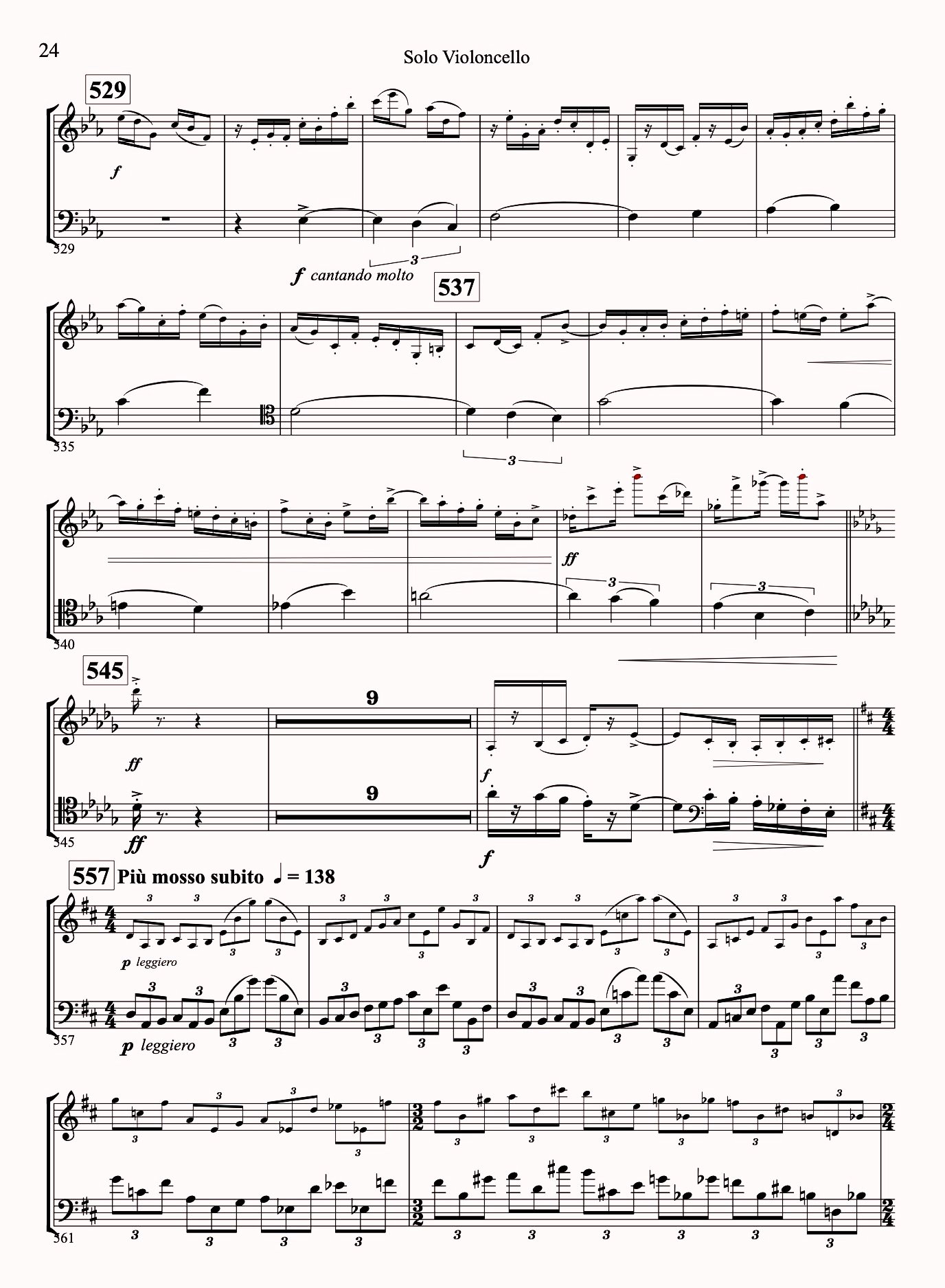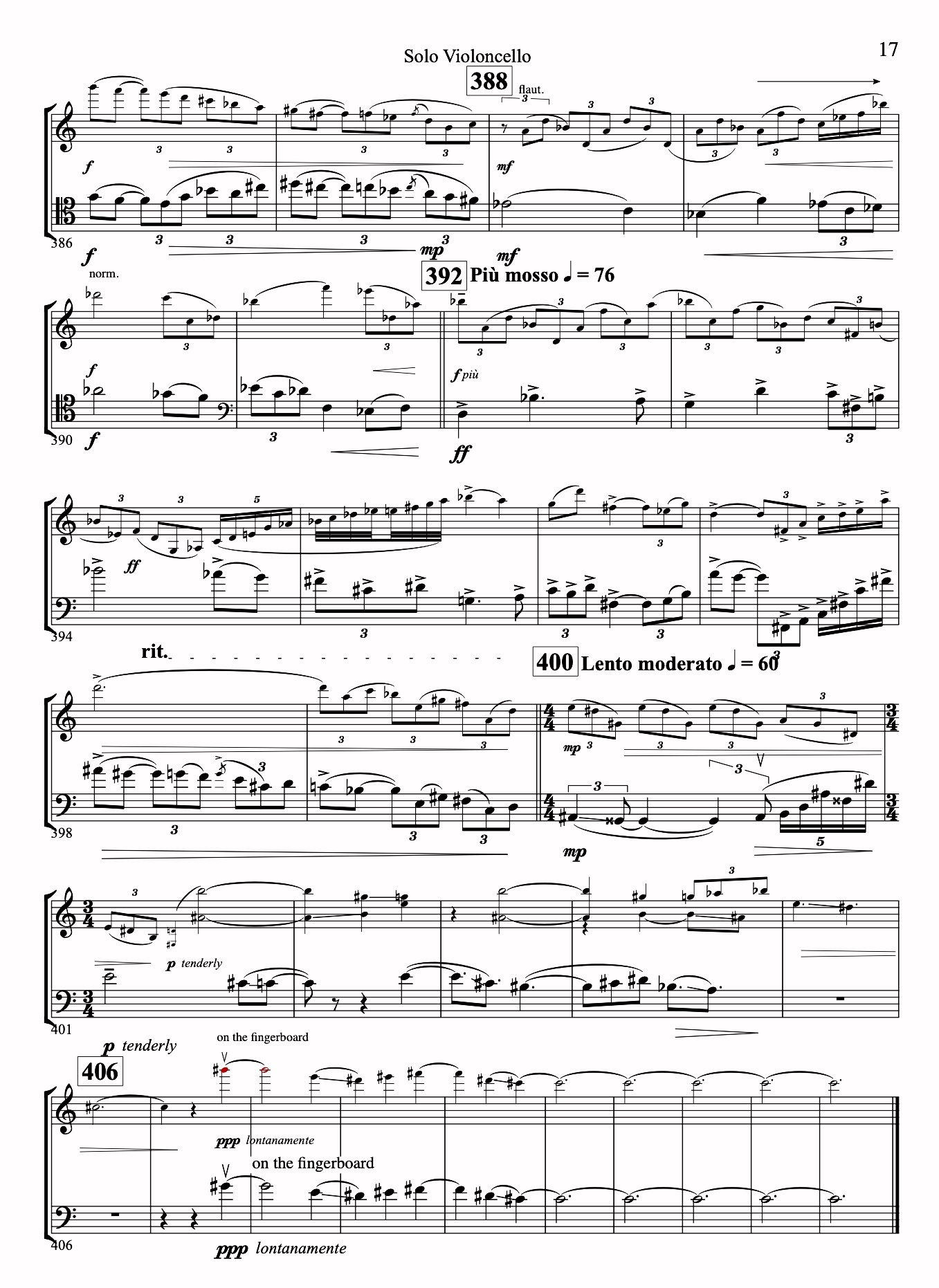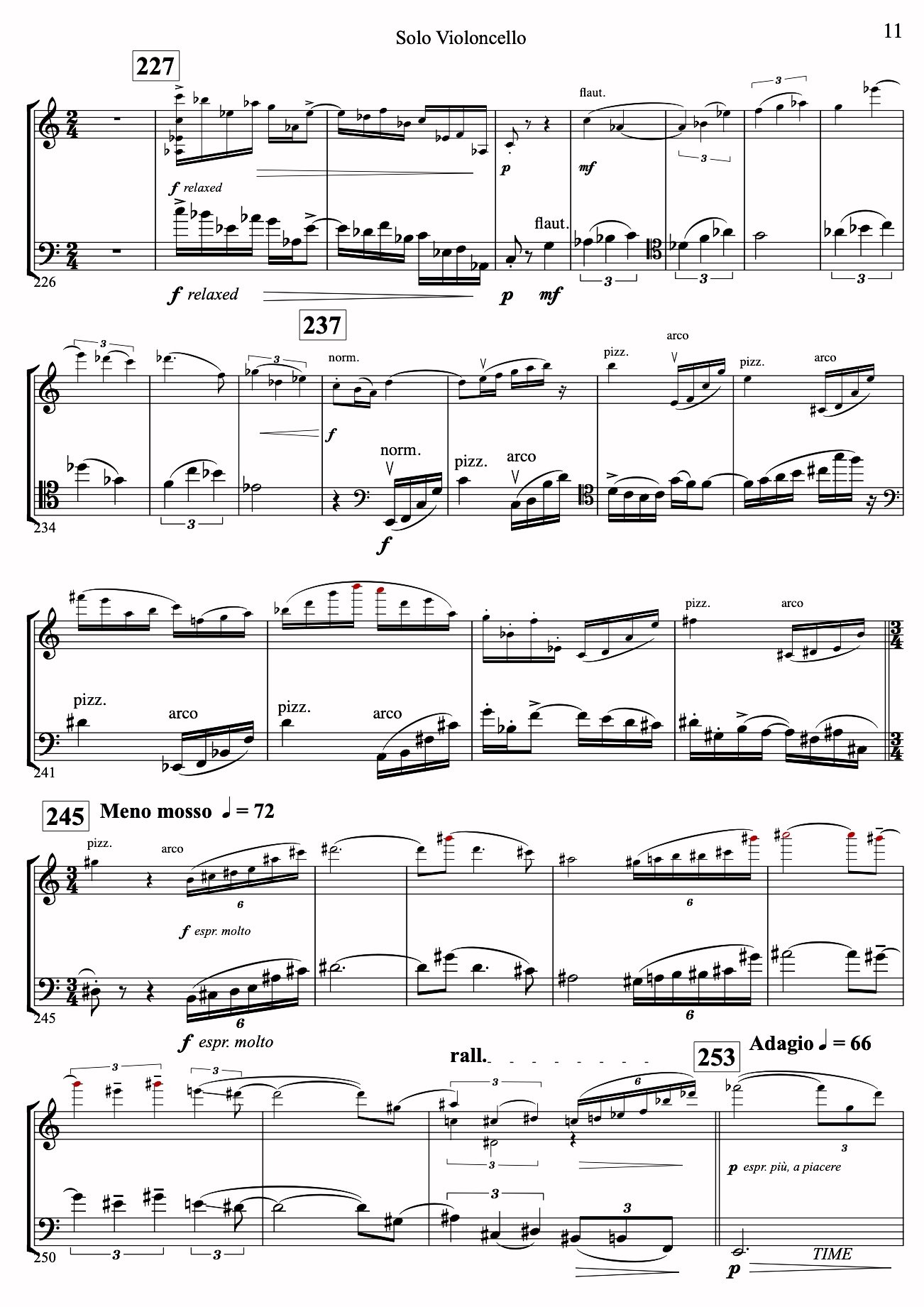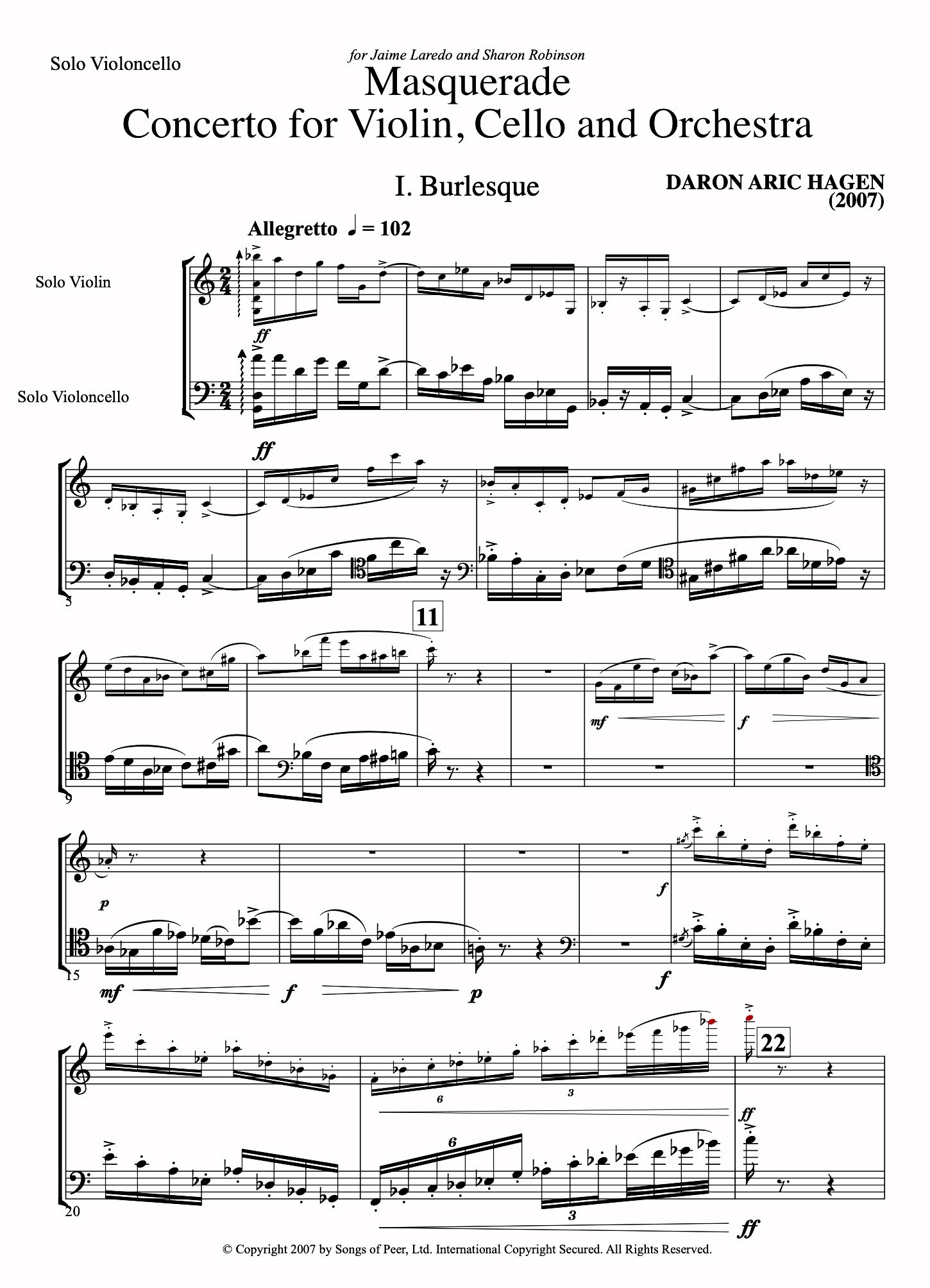Masquerade (2008)
Double Concerto for Violin, Cello, and Orchestra
2.2.2.2 / 2.2.2.0 / timp / strings (minimum 8.7.6.6.3 în players)
Rehearsal reduction for piano available.
Duration: 24’
Movement Titles: Burlesque (10:13) | Elegy (6:51) | The Last of Pedrolino (3:22) | Galoppade (4:20)
First Performance: 16 February 2008 / Sacramento, California / Jaime Laredo, violin / Sharon Robinson, cello / Sacramento Philharmonic Orchestra / Laura Jackson
Dedication: "Commissioned by the Sacramento and Vermont Symphony Orchestras. Dedicated to Jaime Laredo and Sharon Robinson."
Publisher: Peermusic Classical
Recording: iTunes | Bridge
Program Note:
The double concerto Masquerade takes as its starting place the conventions of Commedia dell'arte, a popular form of improvisational theater which began in Italy in the 15th century and remained popular into the 18th century. Costumes and masks identified life's universal characters, first described centuries earlier in Greek and Roman comedies, and the classic plots often revolved around lovers. One of the most important characters was Arlecchino, also known as Pedrolino, or the Harlequin. The soloists take on the roles of musical lovers in the first movement (Burlesque). The story of their courtship is told by two harmonically and melodically ellusive contrasting themes. A vecchio (elder) arrives on the scene. By seducing one of the innamorati, he forces them apart and the movement ends. The second movement (Elegy), is a lament for lost love. It tells the story of the lovers apart. As the movement progresses they grow older, and wiser with experience. After many years, in the movement entitled The Last of Pedrolino, they are reunited one evening at the bedside of a mutual friend, the zanni Pedrolino, who, dying, wishes to see them both one last time. Inspired by Pedrolino, the two lovers reconnect, no longer as lovers but as old friends and soul mates. In a final Galoppade, they relive the open-hearted joy in singing of their childhoods before parting forever.
Selected Reviews:
"This four-movement work was blessed with the presence of violinist Jaime Laredo and cellist Sharon Robinson as soloists. If there ever was a poster boy for clarity and accurate tone on the violin, it's Laredo. Hagen's concerto is written as an intense dialogue between violin and cello, and these two musicians delivered. In this engaging and lightly dissonant work, the music traces an evolution from hope to lament, to a joyous end. Hagen has an affinity for writing interesting and original music for strings. It's music that takes on profound dimensions when instruments speak simultaneously. Laredo and Robinson played the four movements with their trademark robust sound. The orchestra, especially the strings, sounded taut throughout. Conductor Jackson was willing to let the music bloom, her conducting style crisp and efficient, yet filled with bursts of controlled emotional cues."
—Edward Ortiz, The Sacramento Bee, Sacramento, California, 2/19/08
"Here, the violin and cello are commedia dell'arte lovers in an opera typical of the style. The first movement, "Burlesque," in which the two fall in love and are subsequently broken apart by seduction by an intruder, dives right into the second, "Elegy," a forlorn lament for lost love. The solo violin and cello speak and sing, alone and together, in tonal language, while the orchestra provides the varying descriptions and moods with fluid tonalities.... In the third, "The Last of Pedrolino," the elderly dying character (also known as Harlequin) brings the two lovers, the violin and cello, back together, resulting in a tenderly beautiful duet, and a touching movement. In the final "Gallopade," the two reminisce about their happy childhood with an uplifting joyful romp. The work ... is accessible, charming and attractive, but is complex enough that it will require repeated listenings to take it all in. The composer could not have asked for a more effective performance. Laredo and Robinson reveled in the lyricism of the work and their natural rapport achieved the musical intimacy necessary to make it work. Peters and the VSO successfully delivered the difficult score, supporting the soloists."
— Jim Lowe, The Barre Montpelier Times Argus, 5/5/08
Daron Aric Hagen’s Masquerade takes as its point of departure the commedia dell’arte. In the upbeat, jaunty opening movement, the soloists “take on the roles of musical lovers [whose] courtship is told by two harmonically and melodically elusive contrasting themes,” according to the composer’s notes. Bright sonorities and crystal-clear textures of neoclassical Stravinsky meet Korngoldian romanticism. The second movement is a “lament for lost love,” its sense of benumbed grief not unlike that of “The Entombment” from Hindemith’s Mathis der Maler symphony. The third movement brings achingly beautiful romanticism and lush orchestration to the fore as the former lovers “are reunited at the bedside of a mutual friend [and] they reconnect, no longer as lovers but as old friends and soul mates.” The finale brings a satisfying sense of cyclic closure as the two “relive the open-hearted joy in singing of their childhoods before parting forever.”
I listened to Masquerade before reading Hagen’s notes, and what I imagined previously was not far off from what the composer intended, so vividly drawn and cogently developed are his musical arguments. The soloists are almost always integrated into the orchestral fabric, which is kaleidoscopic in its variety and colors.
— Robert Markow, Fanfare Magazine, May-June 2012
Hagen with (l. to r.) Jaime Laredo, Troy Peters (conductor), Sharon Robinson, and Adam Abeshouse (producer/engineer) during the recording session of Masquerade: Double Concerto for Violin, Cello and Orchestra for the Bridge label with the Vermont Symphony Orchestra, 5 May 2008. (p/c: Burning Sled Media)

